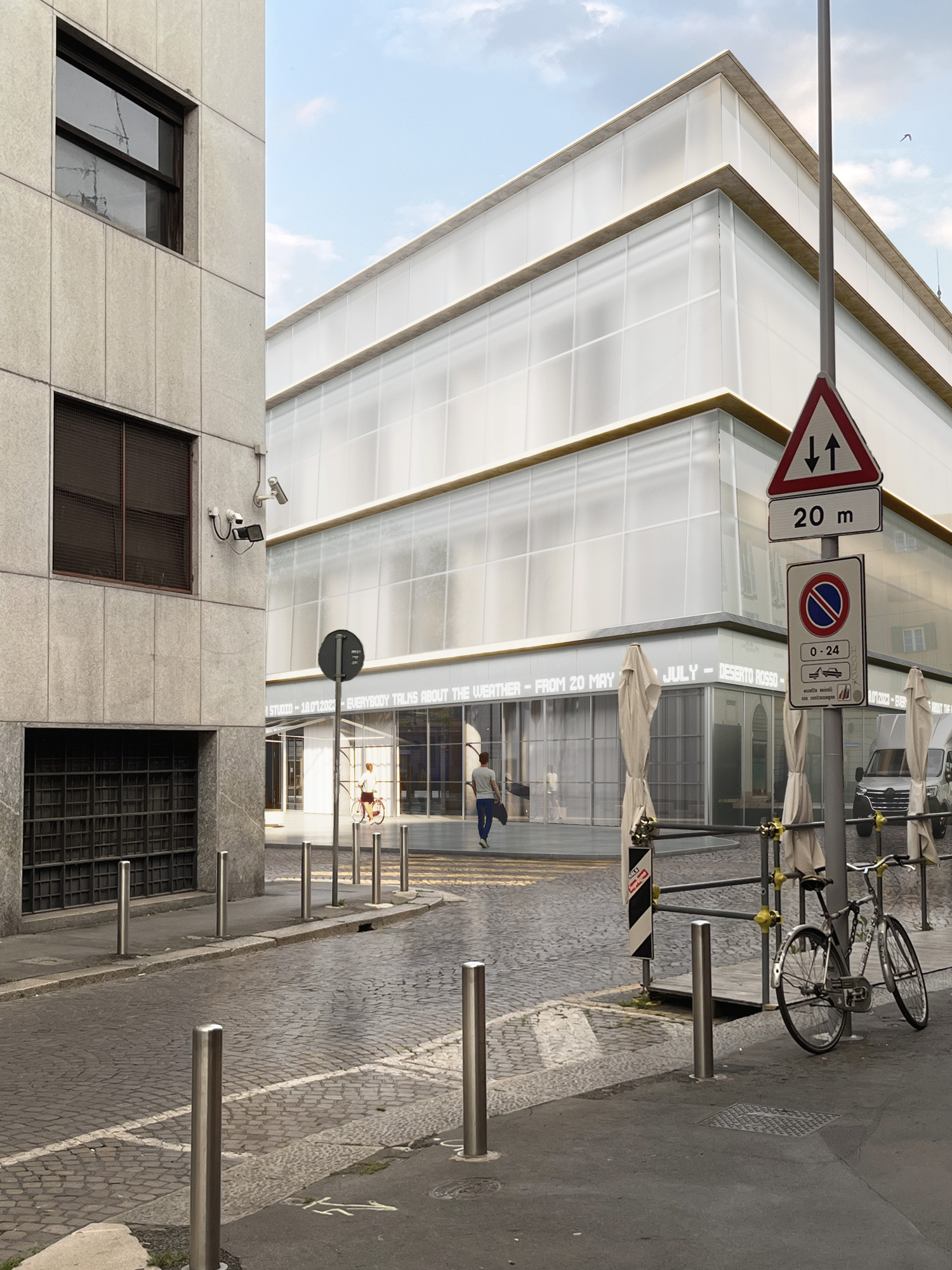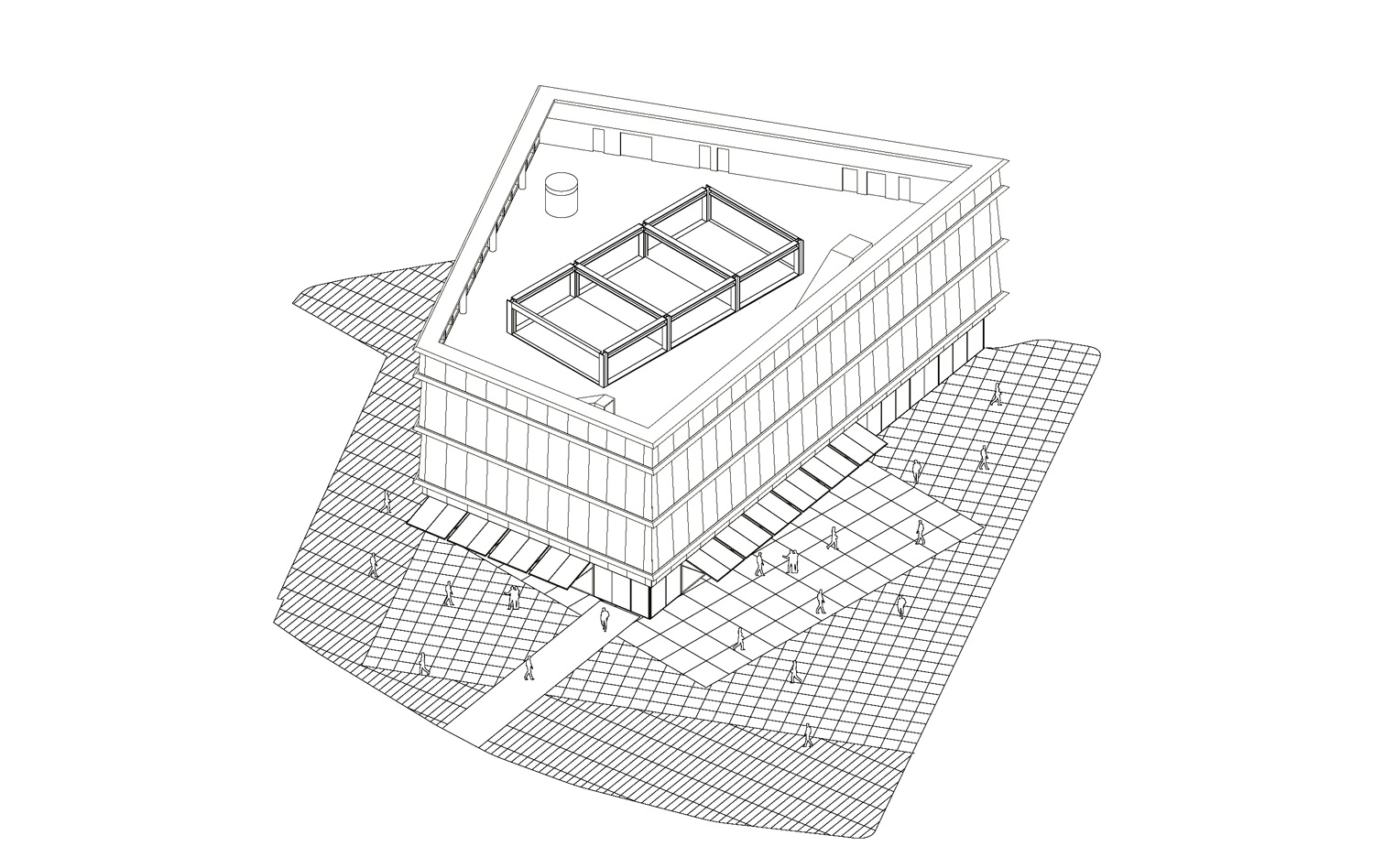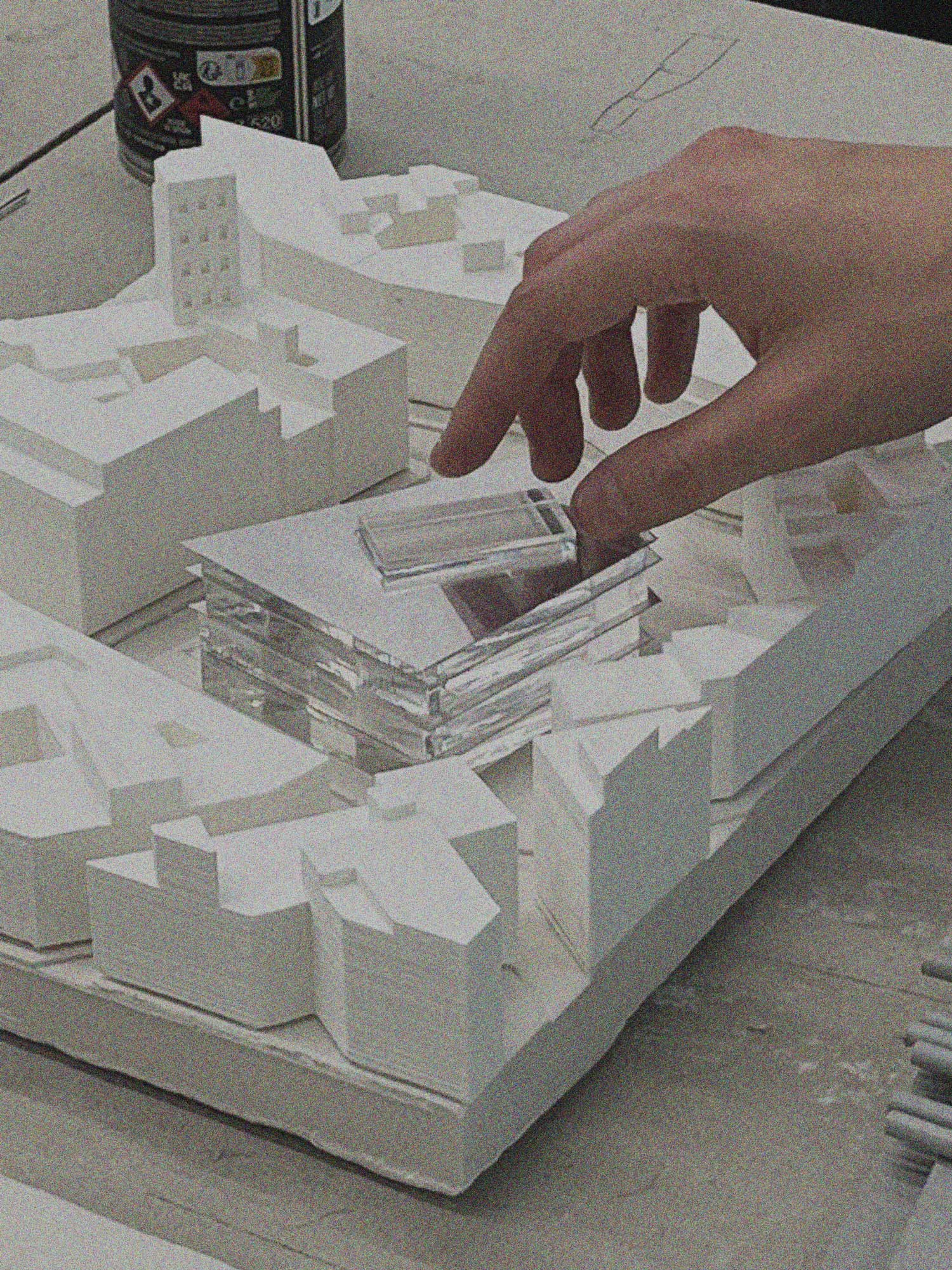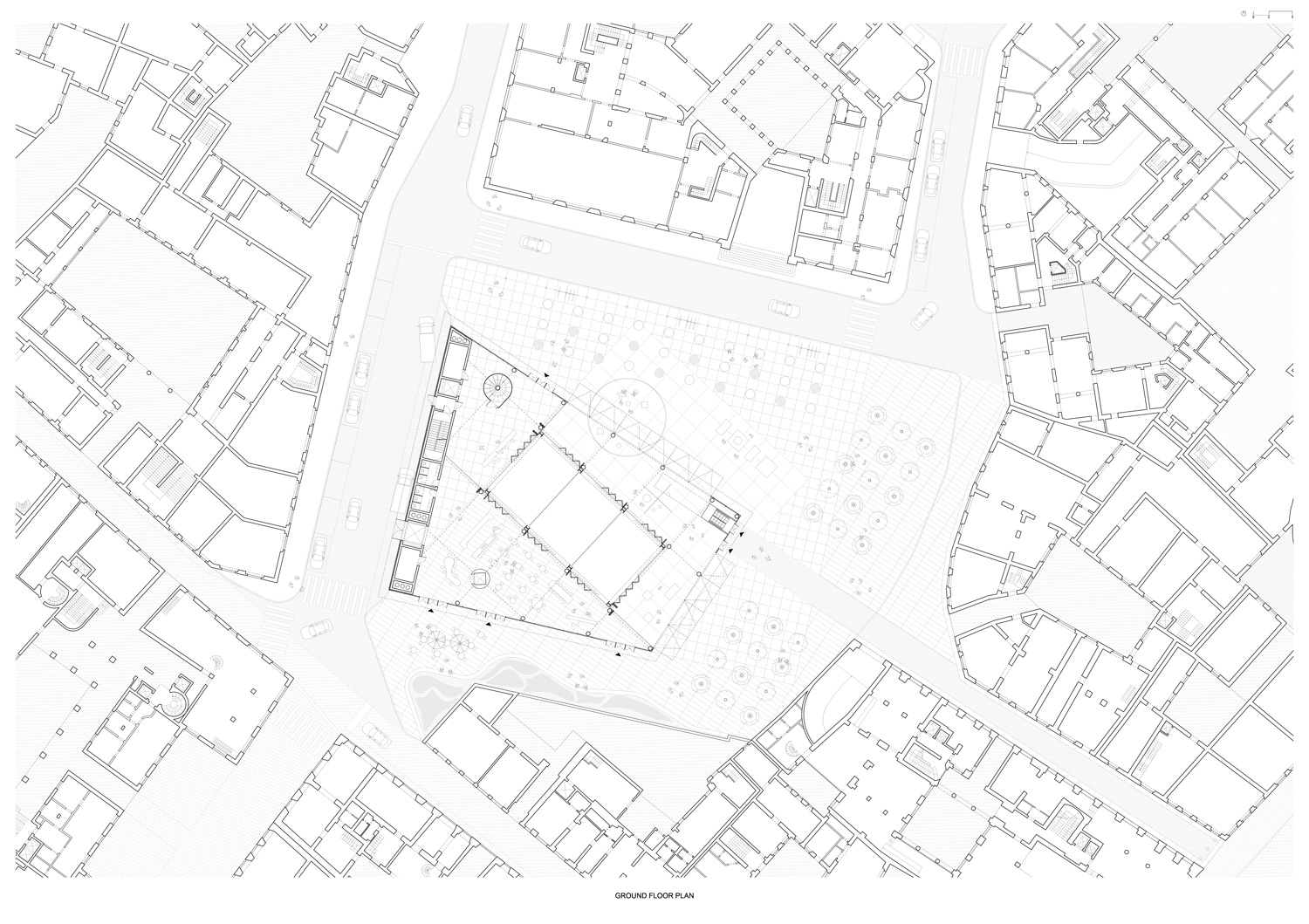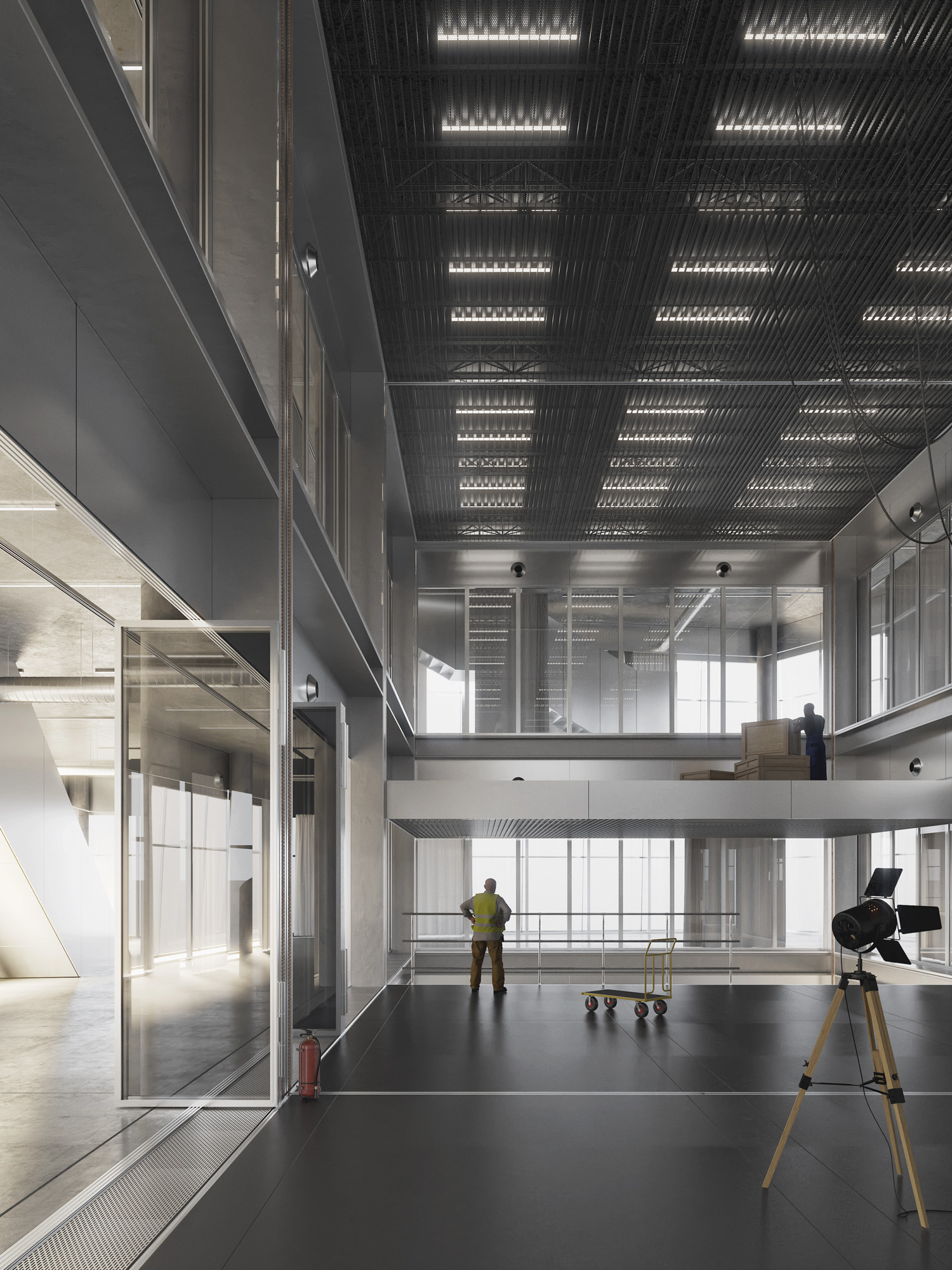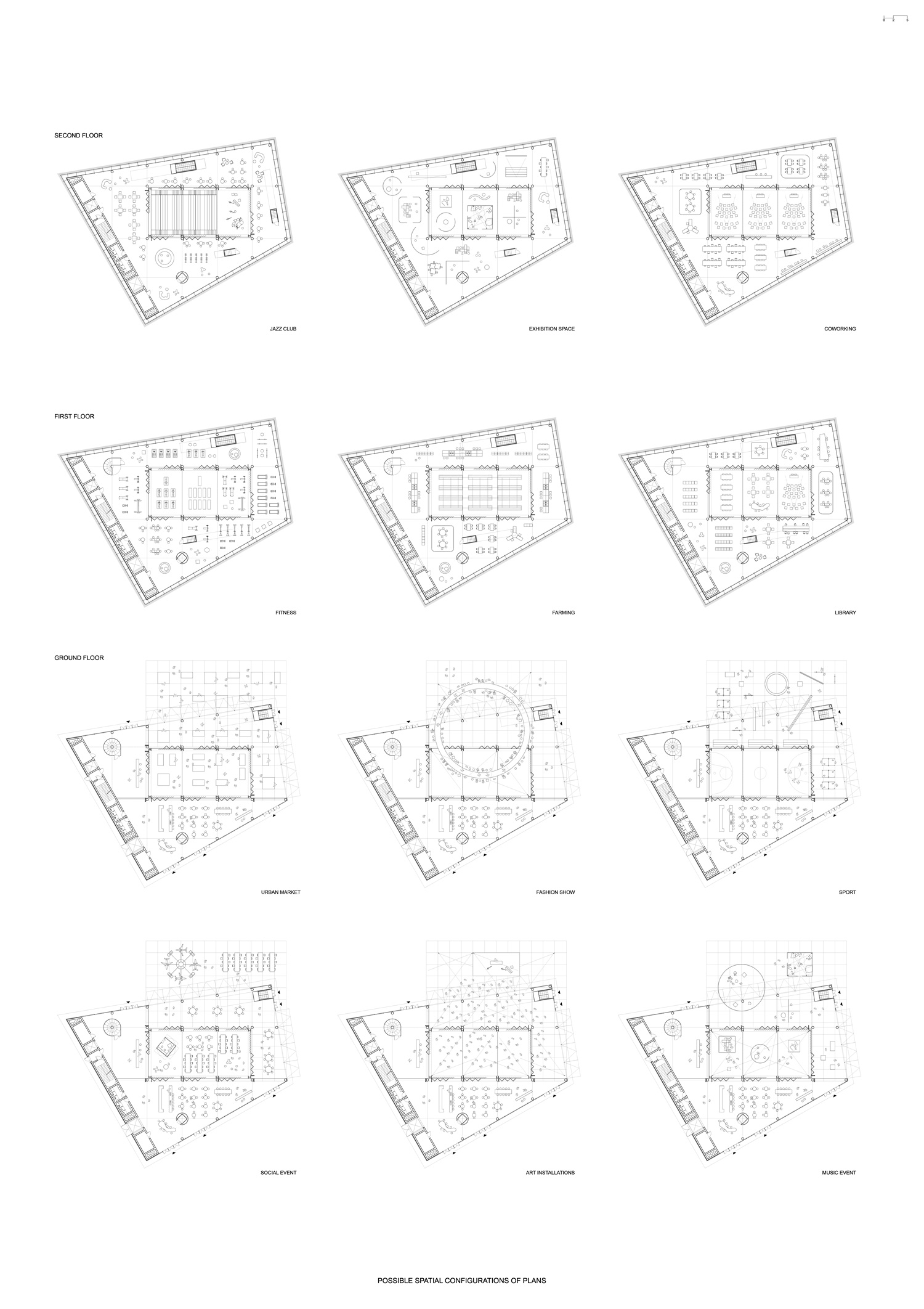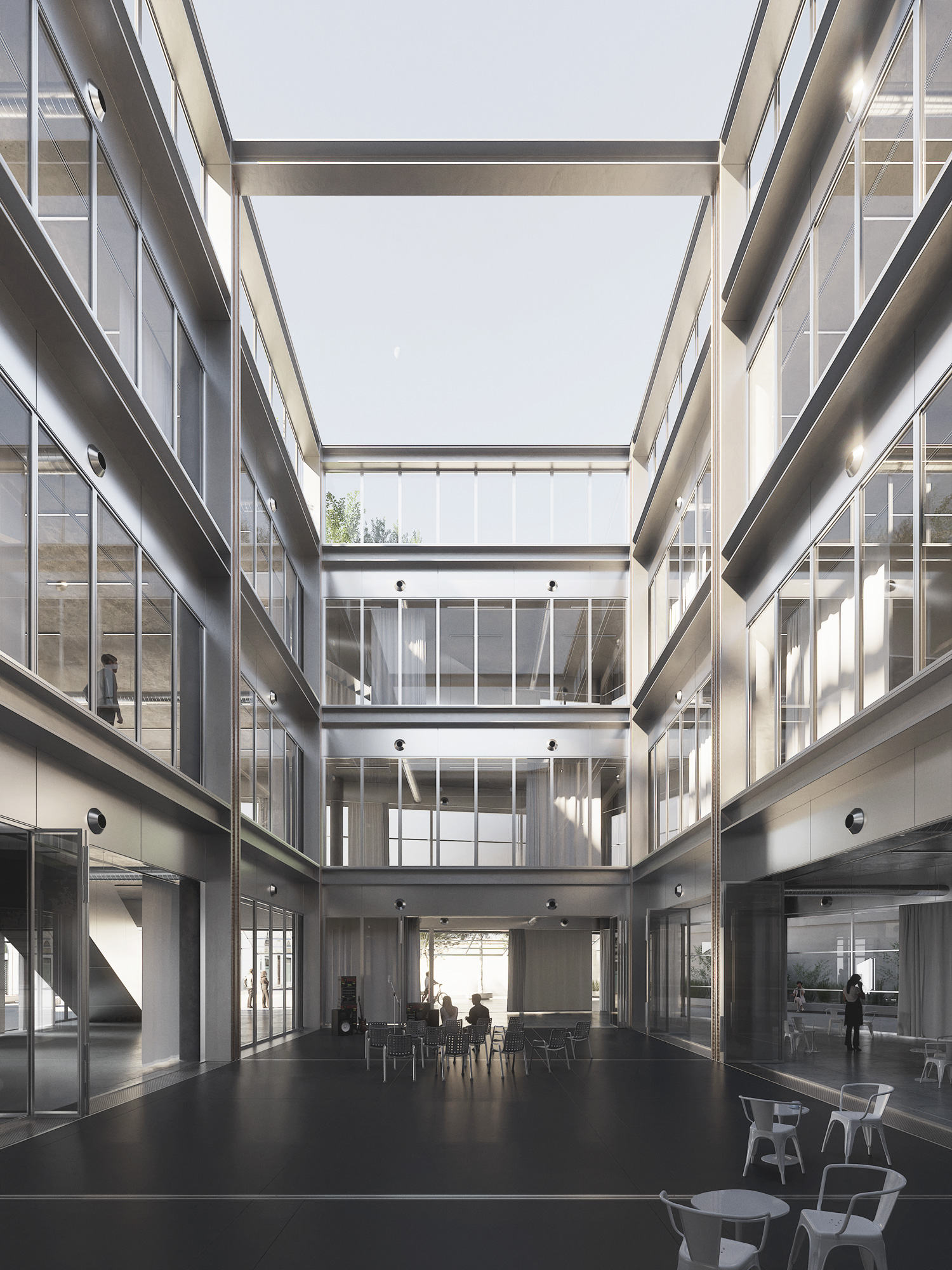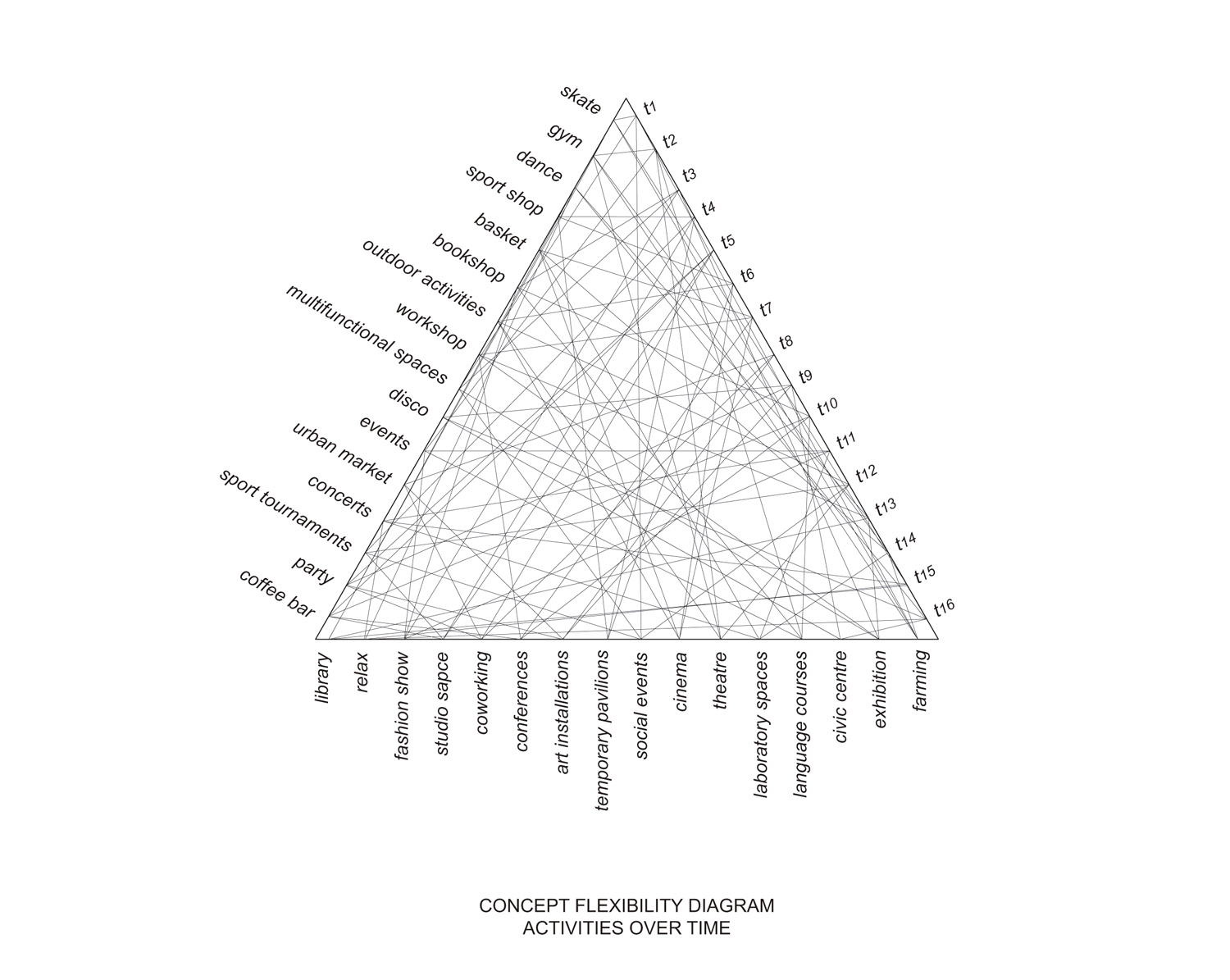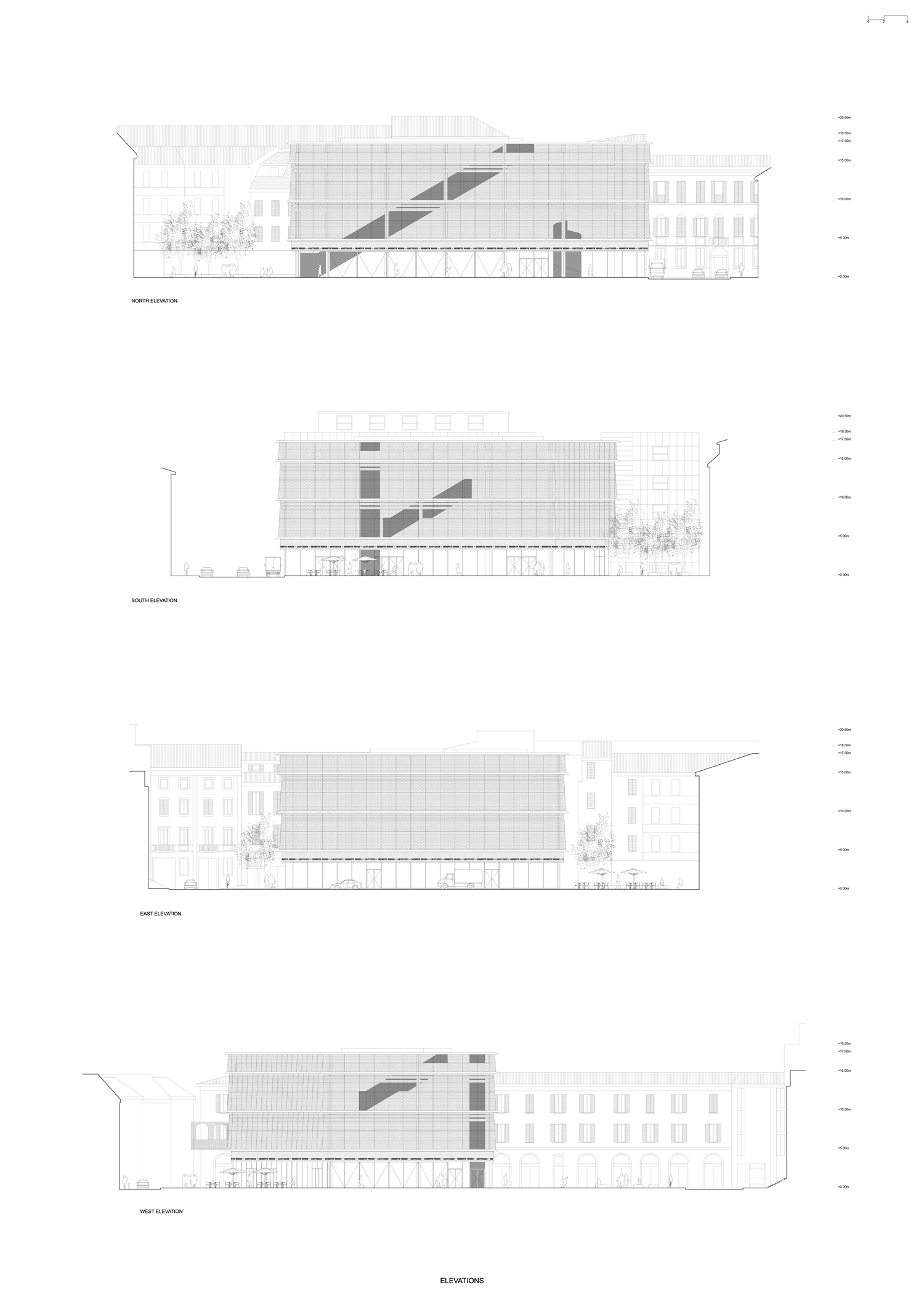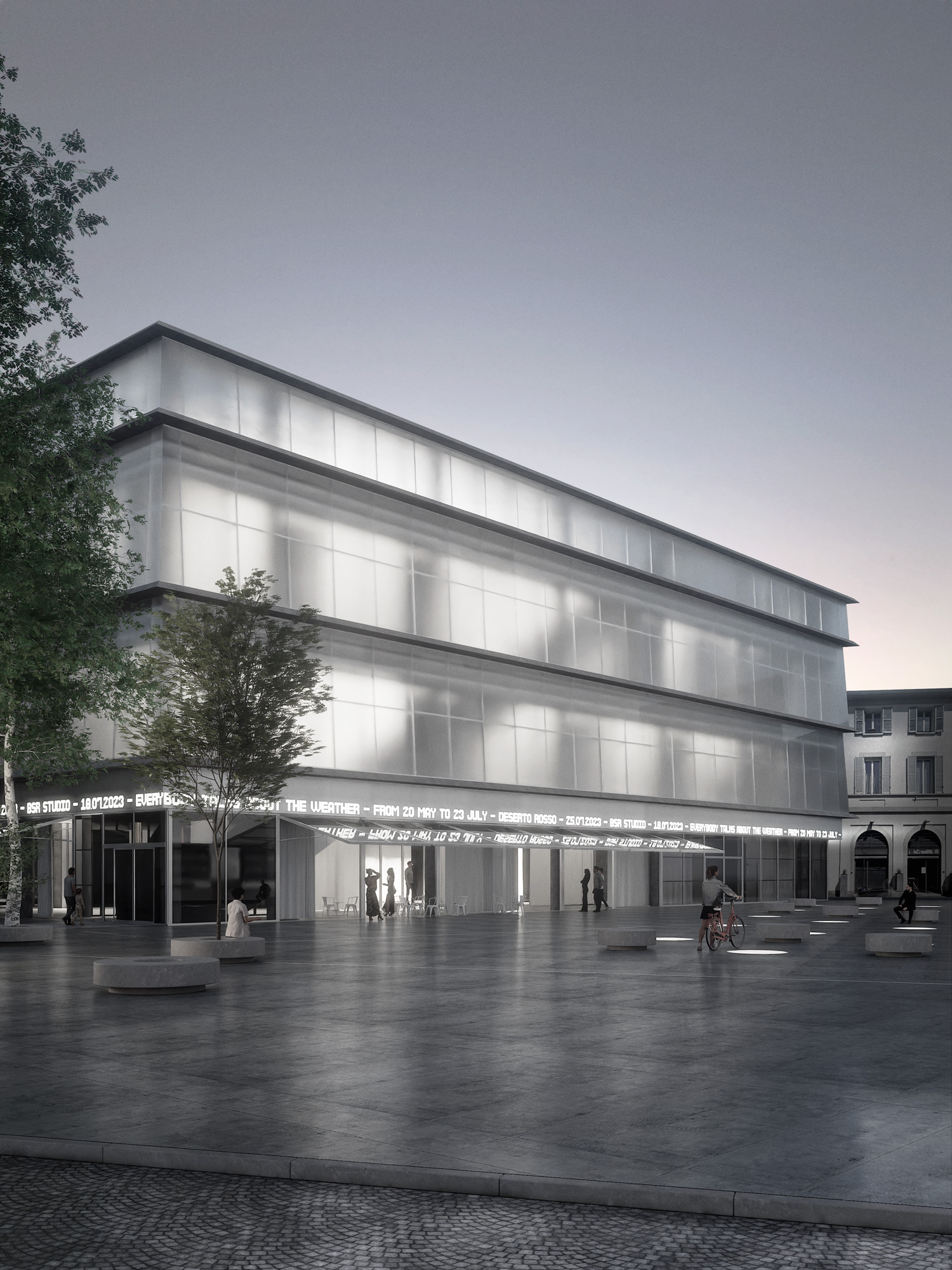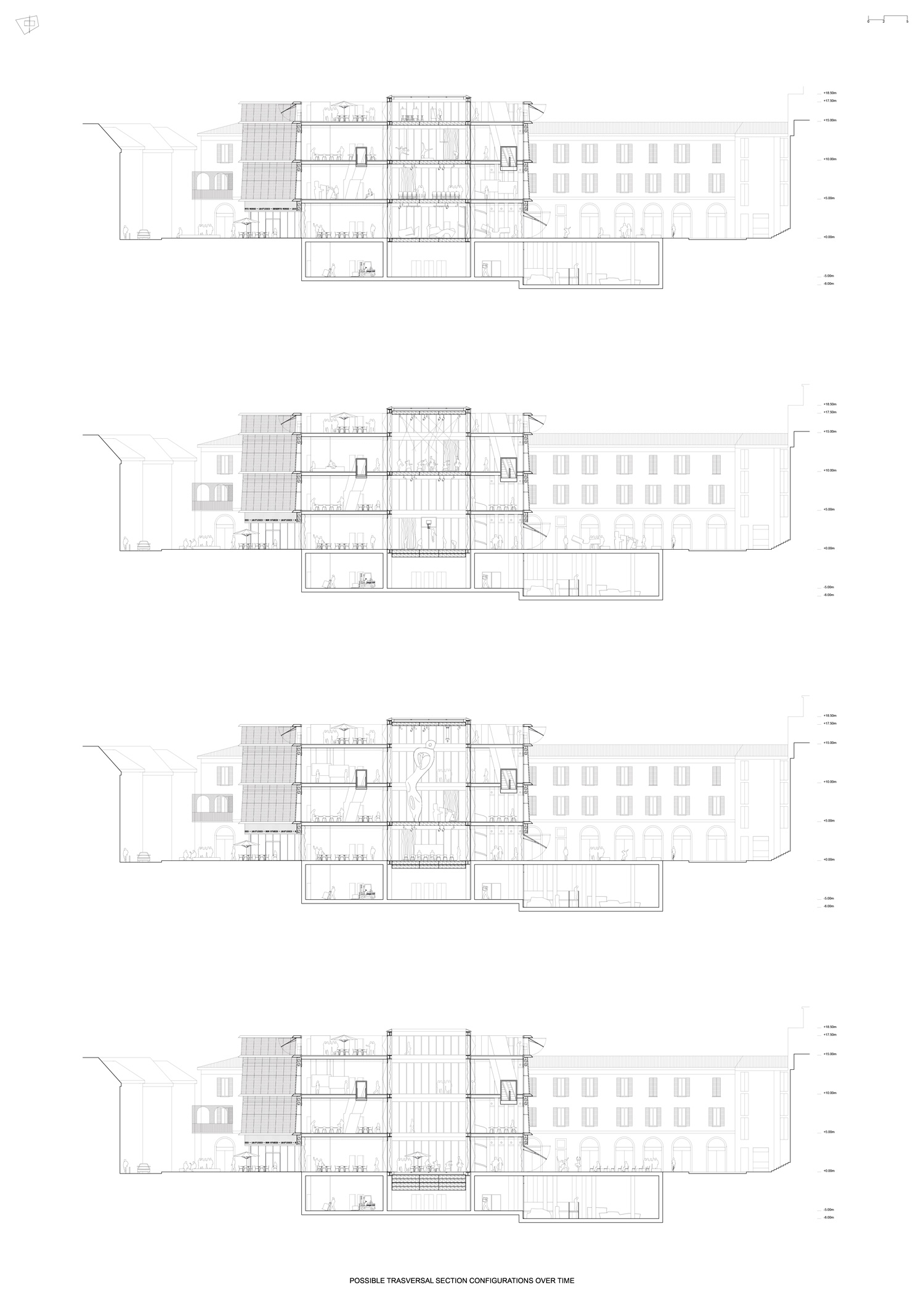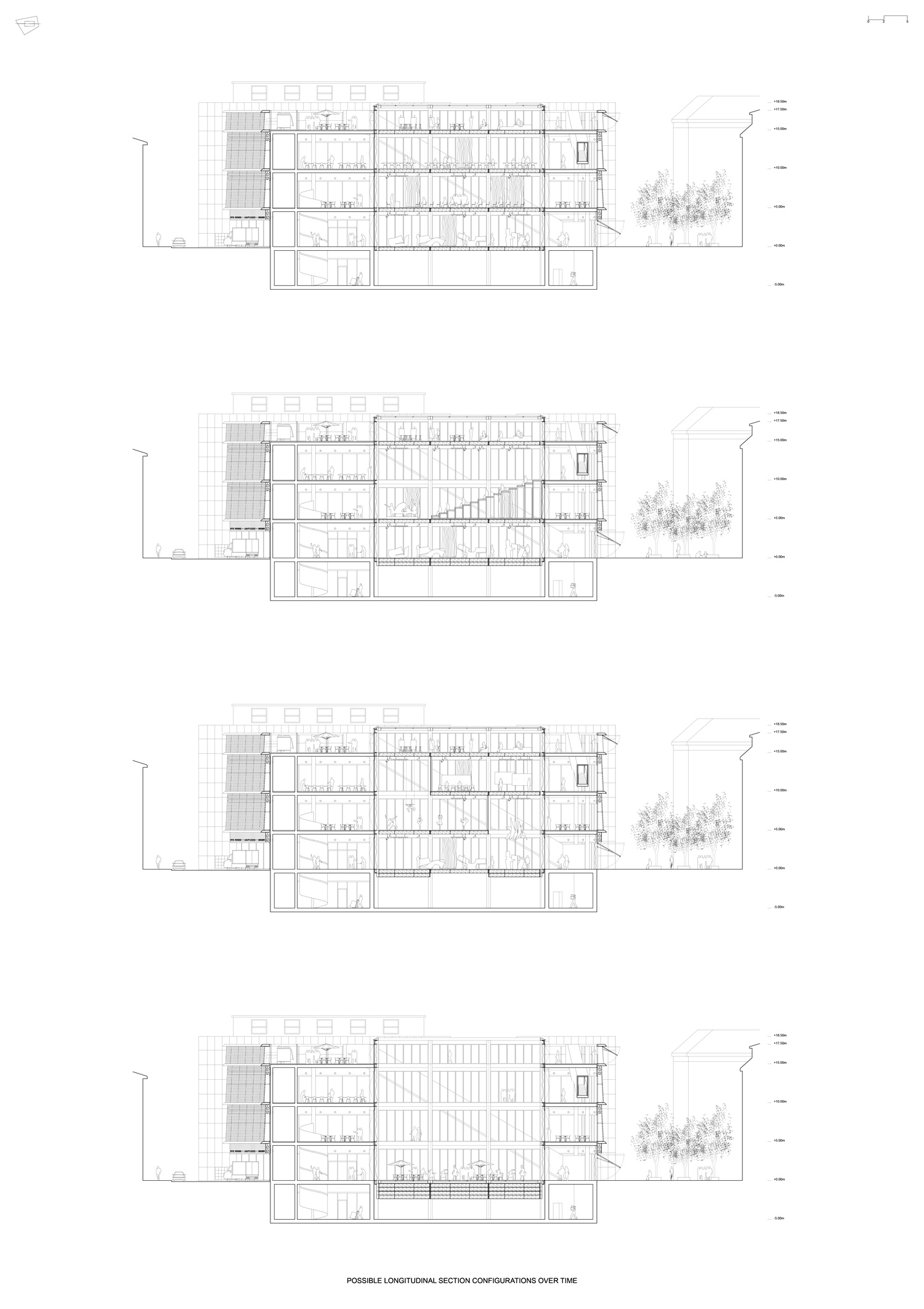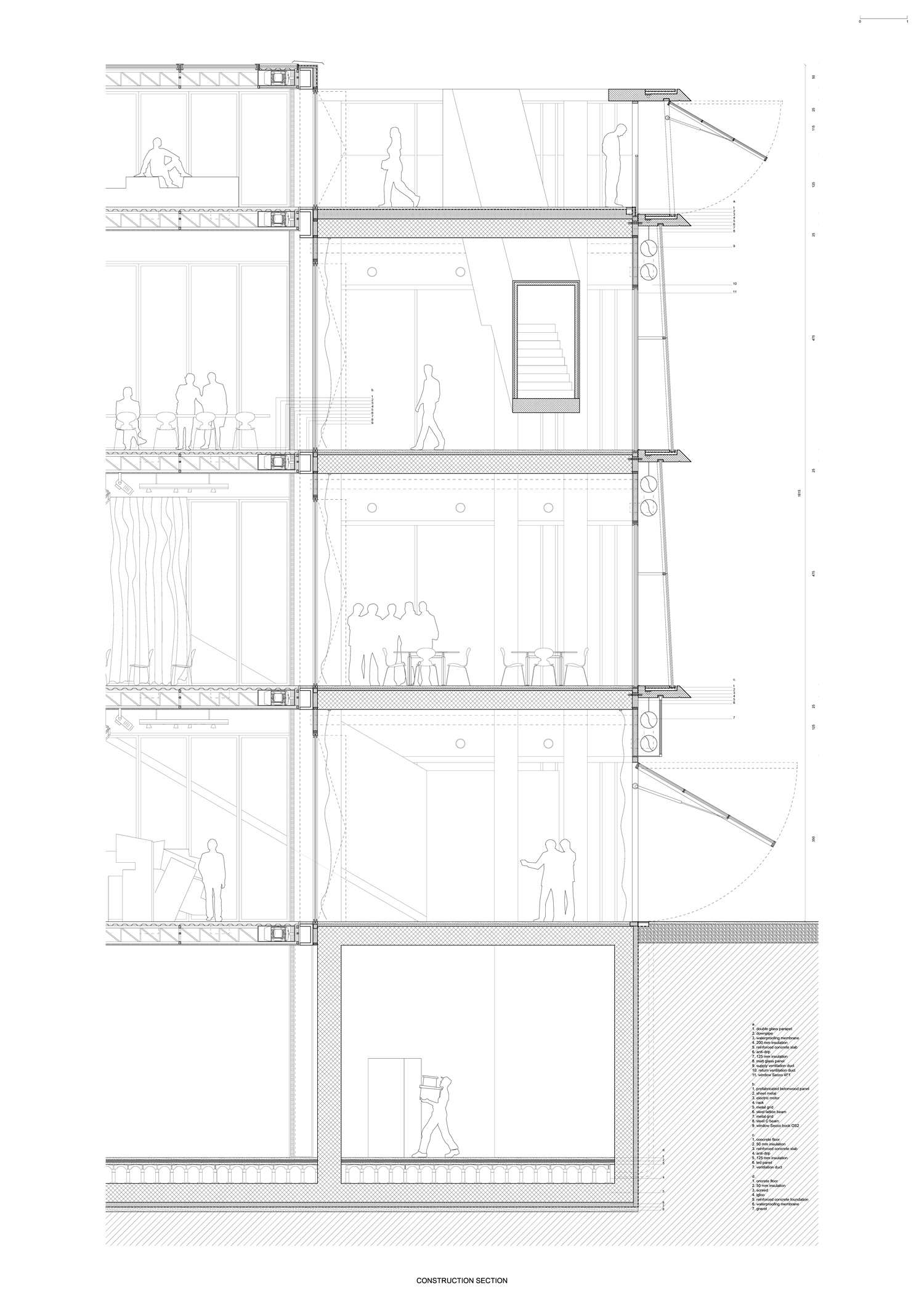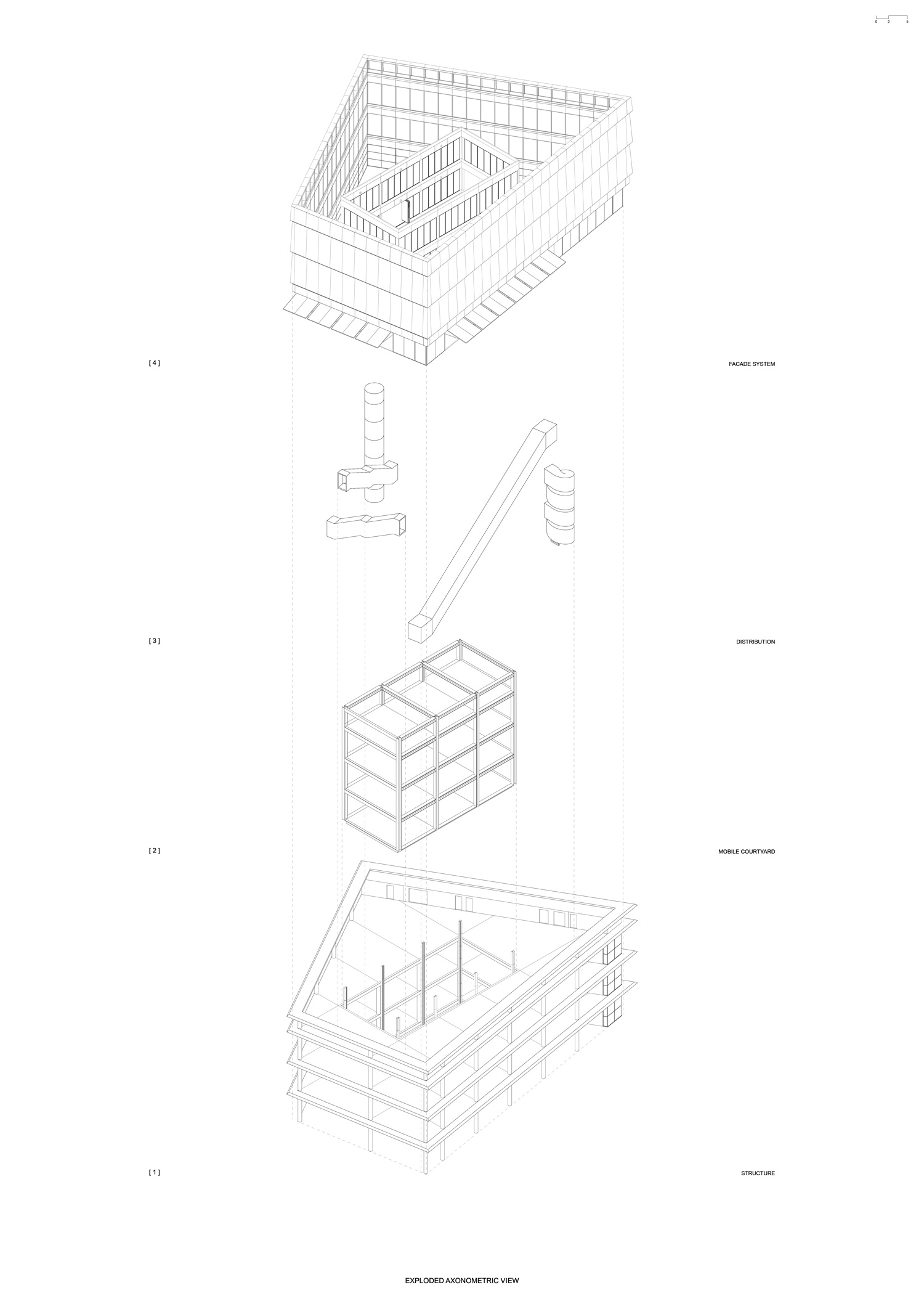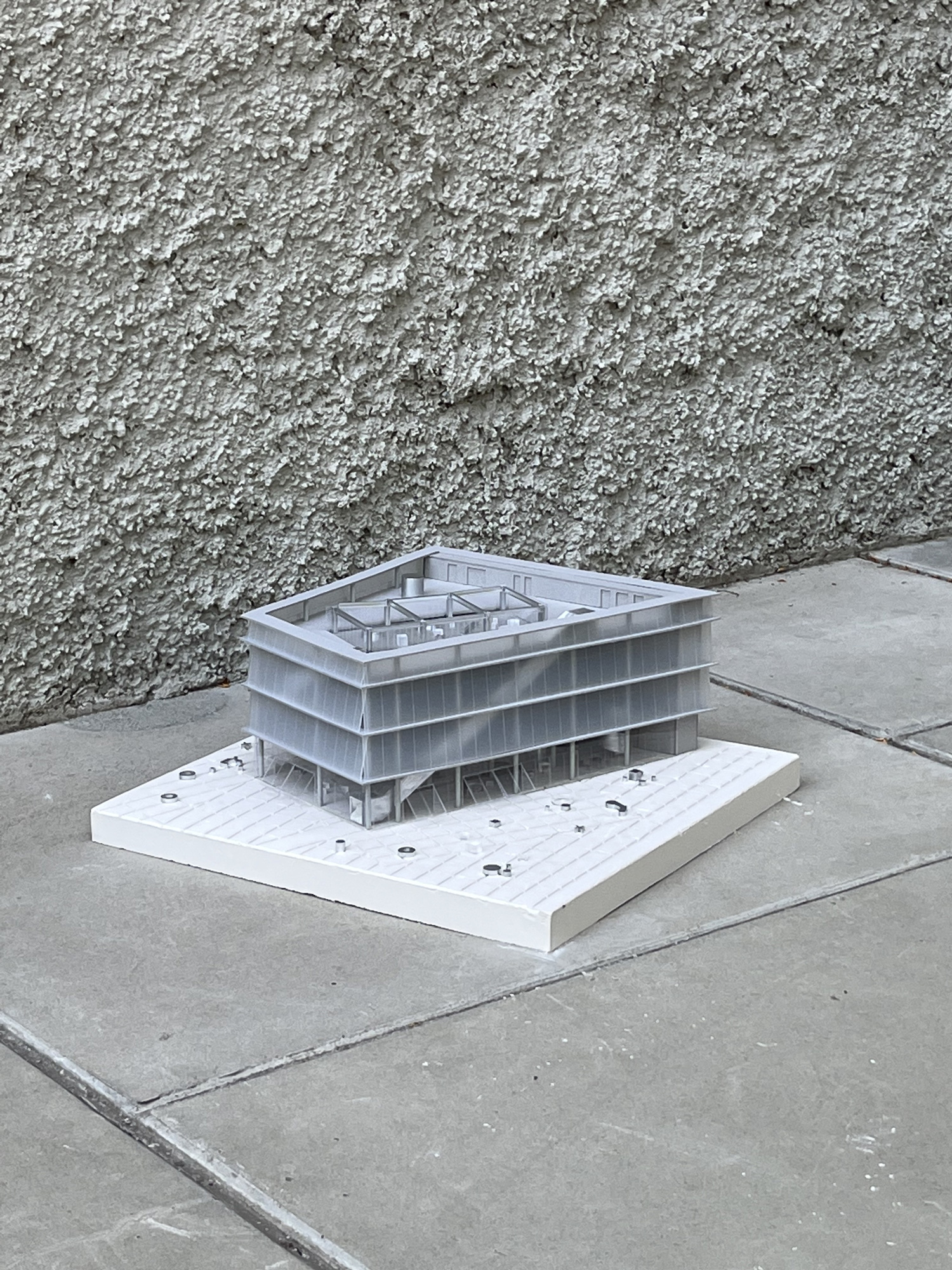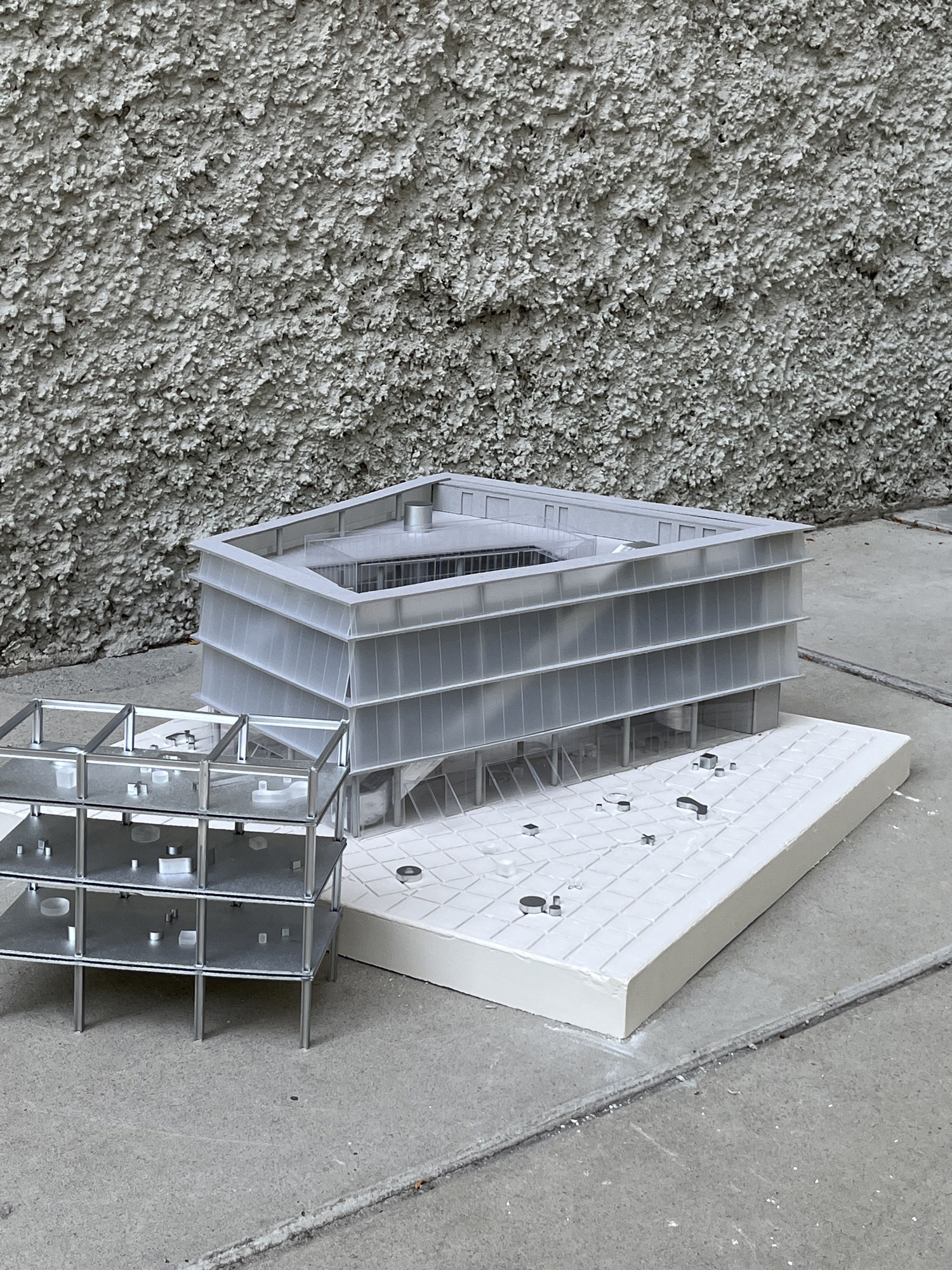☉ The potential of indefinite is an academic project by Daniele Russo for Politecnico di Milano in 2023. It is located in Milan Italy in an urban setting. Its scale is medium with a surface of 6.000 sqm. Key materials are concrete, glass and metal.
How can the ‘slowness’ of the architectural discipline coexist with the unpredictability and rapidity of social phenomena involving the city?
This research investigates the time-architecture relationship in the light of the interpretation of the fundamental spaceprogramme binomial, with the intention of demonstrating the inadequacy of the concept of an architecture whose form follows function, due to the obsolescence of function itself in the context of contemporary social and urban dynamics. The project proposal stands as a possible approach to this question, through the development of a public architecture within the city of Milan.
The main objective of the project consists in the implementation of the variety of the urban offer, considered fundamental in terms of an opportunity capable of facilitating social interaction and a sense of community, achieved by means of uninterrupted accessibility: a public architecture, open to all and active 24 hours a day every day, which establishes a direct relationship with the square on which it stands. The project area is therefore transformed from an unused and private space for the city to an opportunity intended as a place for meetings, events and social relations.
The volumetric concept relates with the main directions and flows of the lot, so as to create a system of squares in continuity with the space adjacent to the church of San Sepolcro. This is combined with a search for architectural specificity, achieved through a critical reading of the context and in particular the identification of the morphology of the area characterised by the grid of Roman origin. In this sense, the idea is, on an architectural level, to reason through the reinterpretation of the Milanese courtyard building: the project area is strongly characterised by this type of building.
The building is organised around what we might call a mobile courtyard, which defines a space that can be continually modified according to the needs of the users, offering them a varied spatial range, as well as a series of spatial conditions that can accommodate each programme to be inserted.The void of the courtyard building, understood as a public space and a place for events, thus becomes in this case a volume ‘in movement’ within the building, flexible and reconfigurable. Thanks to a system of folding glass windows, the central space on each floor can be configured, from completely permeable to closed, depending on the programmatic needs.
A sort of mechanical vacuum that potentially redesigns the space infinitely, seeking to provide the user with the optimal conditions for each event. Service spaces, horizontal and vertical circulation are placed around the volume, closely related to the structure, so as to eliminate spatial constraints inside. In this way, as mentioned, the intention is to try to accommodate the instability of contemporary society by promoting an idea of the city, with a public vocation, rich in opportunities for all kinds of users.
